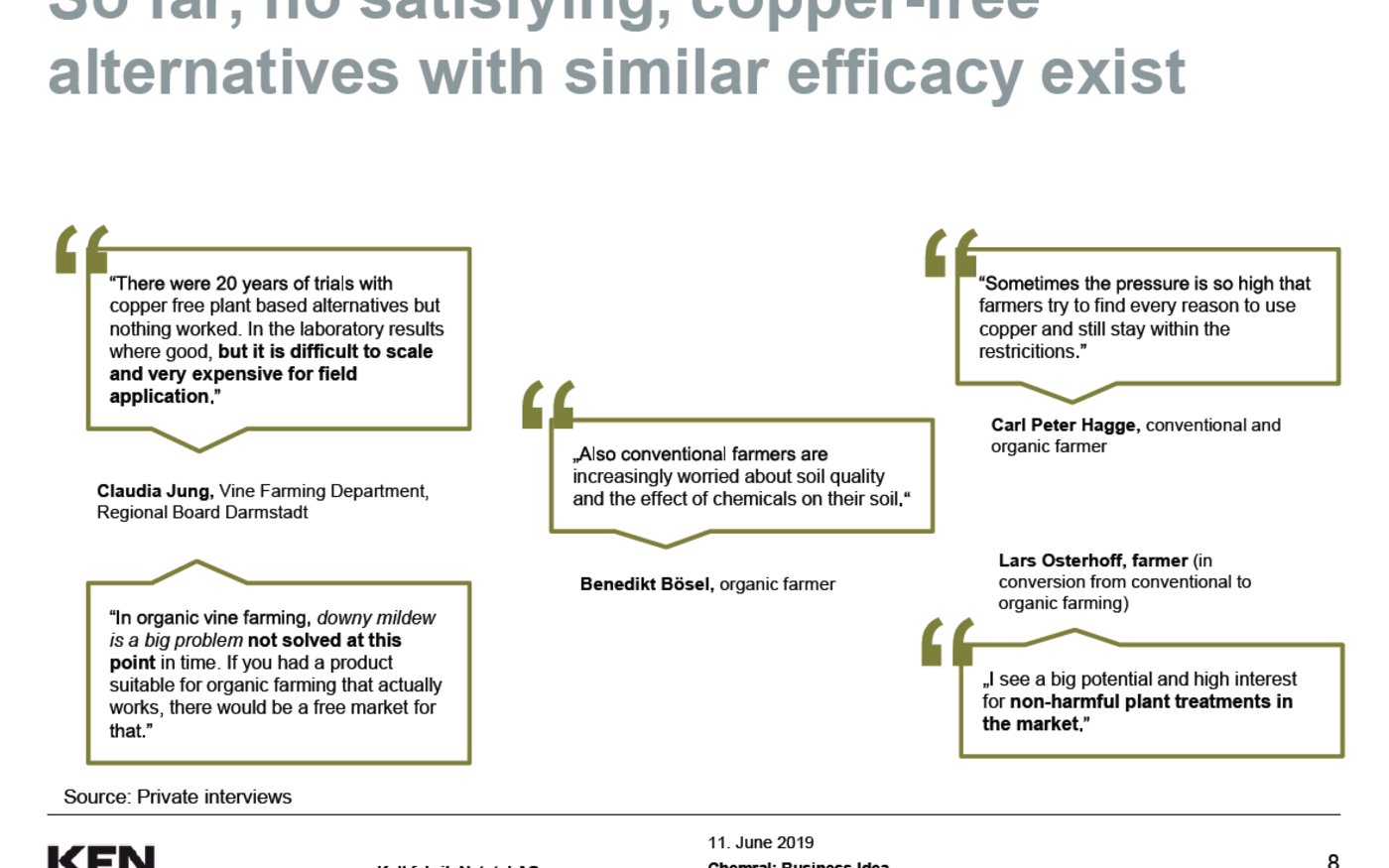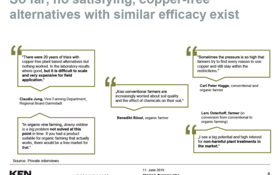Copper currently considered essential to prevent major crop losses
- Copper is used in Europe by most types of agriculture to control certain fungal or bacterial diseases, and plays an important role in protecting crops grown under organic conditions. The use of copper is currently approved in more than 50 situations in arboriculture, viticulture, market garden or arable crops, using formulations that are permitted by the specifications for organic farming. In particular, it is used in vineyards to control downy mildew (Plasmopara viticola), on arable crops to protect potato against late blight (Phytophtora infestans) and, to a lesser extent, in apple orchards to prevent the spread of scab (Venturia inaequalis). These three pathogens are responsible for major crop losses
- Copper products can be used in organic farming and are usually considered the reference in efficacy studies (Source: private conversation with FiBL)
- Copper use is completely banned by Denmark, Finland, Netherlands, and Norway; most other European countries have a limit of 3-4 kg / ha / year
Copper use with considerable side effects
Effects on soil
- Since copper cannot be degraded, and its removal from the soil is negligible through leaching, run-off or plant uptake, this heavy metal can potentially remain as contaminant in the environment for long periods and cause bioaccumulation and toxicity
Effects on micro and macroorganisms
- Accumulation is hazardous to micro and macroorganisms:
- Copper contamination can greatly modify both the size of microbial biomass and soil process, reduced activity of some terrestrial microorganisms;
- High copper concentrations can also reduce populations of earthworms and carabids
Effects on plants
- Excess copper adversely affects the metabolic activity of roots and the absorption of nutrients, through antagonist and synergistic effects
Effects on aquatic organisms
- Copper is moderately soluble in water and binds to sediments and organic matter, it can interfere with aquatic organisms (sediment dwellers, algae, invertebrates and fish) Toxic effects on algae cascades throughout aquatic ecosystems
Effects on human and animal health
- Heavy metals can be transferred easily to animals and humans through food chains, causing toxicity problems
- Studies examining the effects on animals have shown hepatic and gastrointestinal problems caused by copper accumulation
Copper-free, biodegradable and naturally effective PPP alternative: SMAC
- Published patent (EP 2920248 A1 with priority date November 15, 2012) outlining a novel class of materials which are surface-modified alkaline calcium compounds (SMAC)
- SMAC are calcium-based particles which are coated with an hydrophobic layer of fatty acids and were developed as biological fungicides and pesticides in plant and crop protection applications
- In contact with water, the hydrophobic layer is slowly dissolved and thus calcium oxide or calcium hydroxide particles are released
- Time-released fungicidal and biocidal effects against fungus and bacteria
- Release of calcium stearate as hydrophobic, water-repellent adhesives for plant surface - SMAC are completely biodegradable and show a promising potential for a novel class of biological fungicides with a similar efficacy as copper-based products




